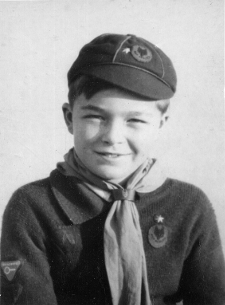Out at sea the dawn wind wrinkles and slides.
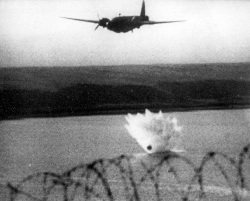 A Vickers Wellington bomber flies low over Chesil Beach and releases a weapon that bounces down the Fleet, narrowly missing the camerman.
A Vickers Wellington bomber flies low over Chesil Beach and releases a weapon that bounces down the Fleet, narrowly missing the camerman.
At 16:00 hours on 17 January, position 6125N 2612W, South West of Icelend, the crew of U268, part of Wolfpack Falke, commanded by Oberleutnant zur See Ernst Heydemann, carries out an attack on convoy HX-222. The Vestfold, a Panamanian whale factory ship is torpedoed. The crew and passengers abandoned the vessel while the engines were still running. Before the ship sank she ran uncontrolled in circles and almost collided with the British rescue ship Rathlin, which picked up the survivors and landed them at Liverpool. Of the complement of 75, the second radio operator, 18 year old Kenneth Geller, from Hackney was amongst the 19 who died. The three British landing craft HMS LCT-2239, HMS LCT-2267 and HMS LCT-2344 (each 291 tons) on deck were lost with the vessel.
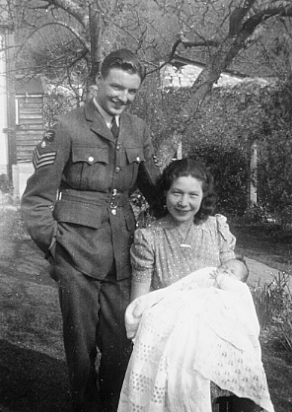 At about 16:30, I was born at Belhaven, the home where my gandparents had brought up my dad and his brother, Sid.
At about 16:30, I was born at Belhaven, the home where my gandparents had brought up my dad and his brother, Sid.That night, the 17 - 18 January, 188 RAF Bombers attacked Berlin. 20 aircraft and about 100 aircrew were lost.
(On 19 Feb 1943, position 4703N 0556W, West of St Nazaire in the Bay of Biscay, an RAF Wellington of 172 Squadron carried out an depth charge attack on U268. Ernst Heyderman, from Güstrow, just East of the historic city of Lübeck and his entire crew were all lost.)
My earliest memories are of being in bed with the light from an oil stove painting a pattern of yellow petals on the ceiling; the regular tock of the clock hanging in the living room, sounding through the thin asbestos wall; the deep feather mattress of the double bed which I shared with my mother. My father was serving in the Royal Air Force as a radar technician. His work took him all over Southern England. I have no early recollection of him: there are a few photos of me with him as small child at Belhaven and at a farm in Kirton in Lindsay, where we stayed for a short period in 1945 before Dad was posted to East Africa.
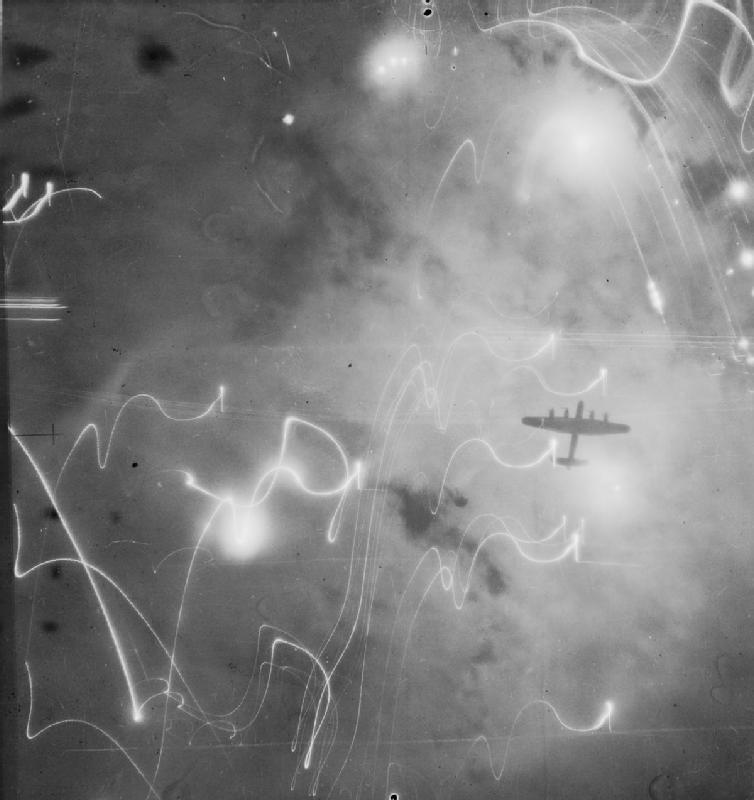
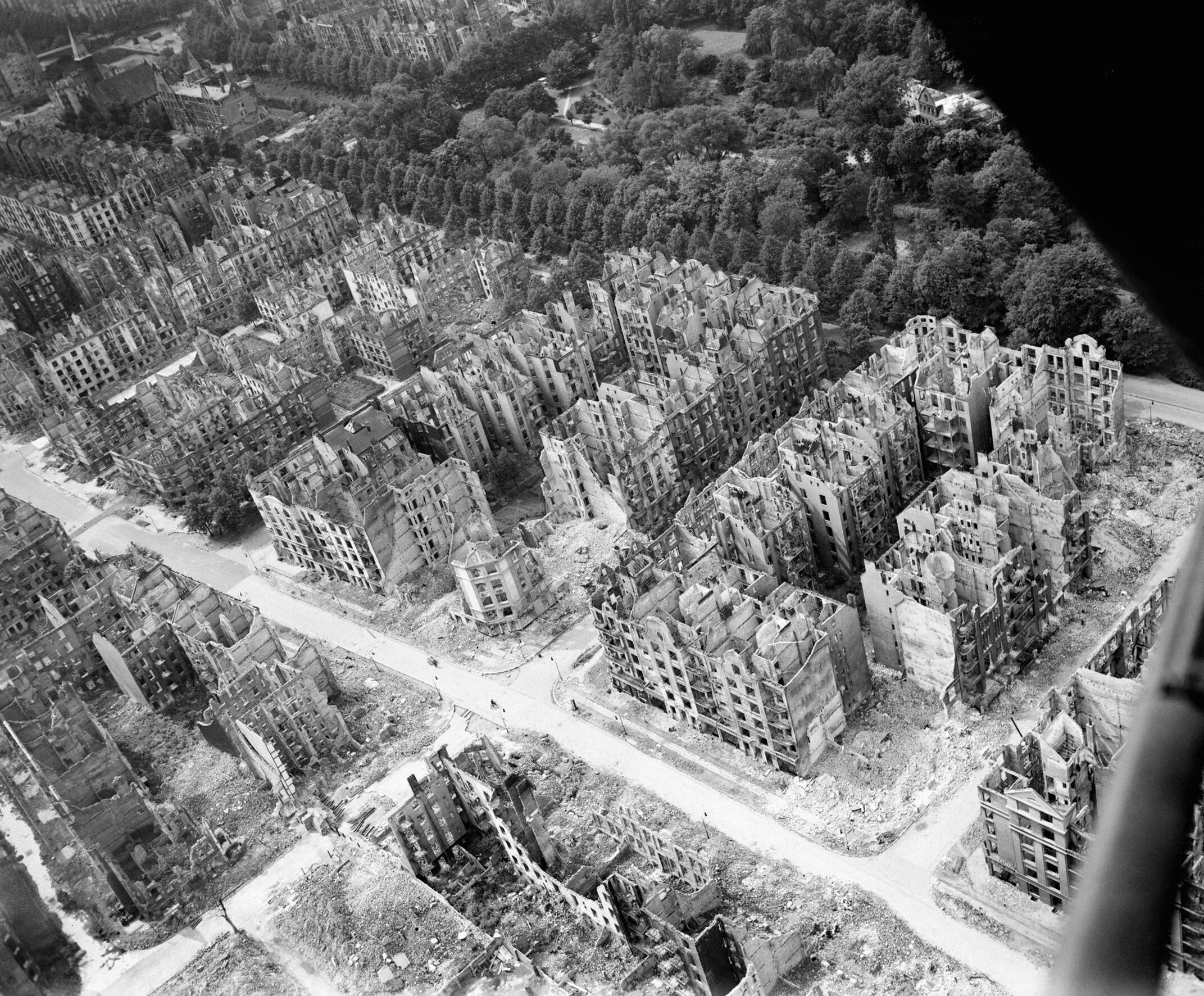
The Allied bombing of Hamburg during World War II included numerous attacks on civilians and civic infrastructure. As a large city and industrial centre, Hamburg's shipyards, U-boat pens, and the Hamburg-Harburg area oil refineries were attacked throughout the war.
As part of a sustained campaign of strategic bombing during World War II, the attack during the last week of July 1943, code named Operation Gomorrah, created one of the largest firestorms raised by the Royal Air Force and United States Army Air Forces in World War II,[2] killing an estimated 37,000 civilians and wounding 180,000 more in Hamburg, and virtually destroying most of the city.
Hamburg was selected as a target because it was considered particularly susceptible to attack with incendiaries, which, from the experience of the Blitz, were felt to inflict more damage than just high explosive bombs. Hamburg also contained a high number of targets supporting the German war effort and was relatively easy for navigators to find. Careful research was done on behalf of both the RAF and USAAF to discover the optimum mix of high explosives and incendiaries. Before the development of the firestorm in Hamburg, there had been no rain for some time and everything was very dry.[3] The unusually warm weather and good conditions ensured that the bombing was highly concentrated around the intended targets, and helped the resulting conflagration create a vortex and whirling updraft of super-heated air which became a 460-metre-high (1,510 ft) tornado of fire.
Various other previously used techniques and devices were instrumental as well, such as area bombing, Pathfinders, and H2S radar, which came together to work with particular effectiveness. An early form of chaff, code named 'Window', was successfully used for the first time by the RAF – clouds of aluminium foil strips dropped by Pathfinders as well as the initial bomber stream – in order to completely cloud German radar. The raids inflicted severe damage to German armaments production in Hamburg.
from Wikipedia entry
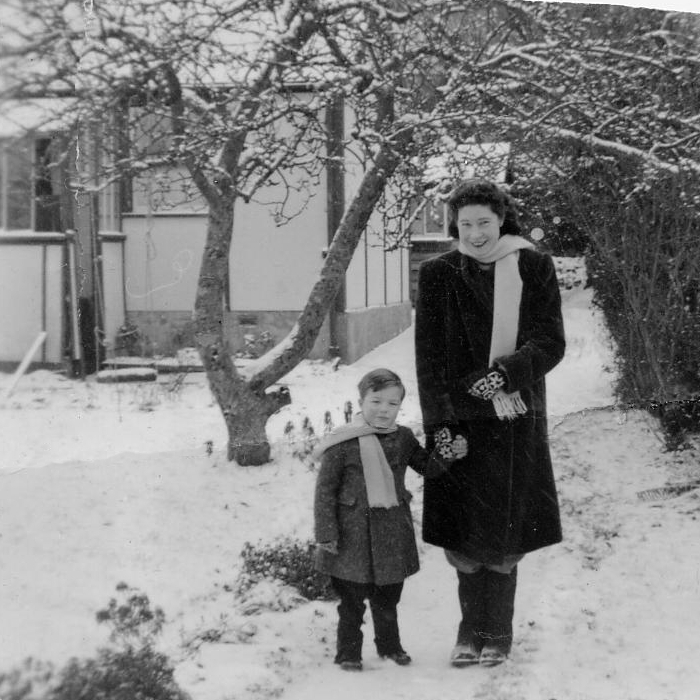 Belhaven, my home, winter 1947.
Belhaven, my home, winter 1947.
